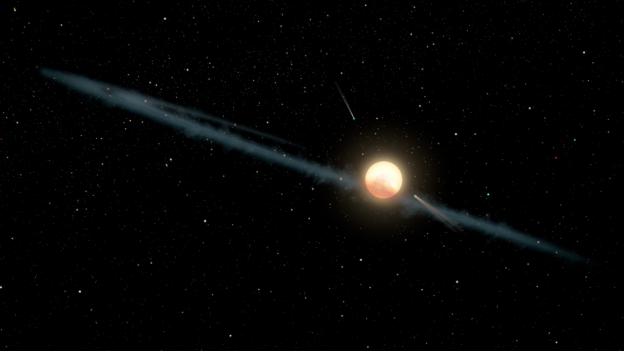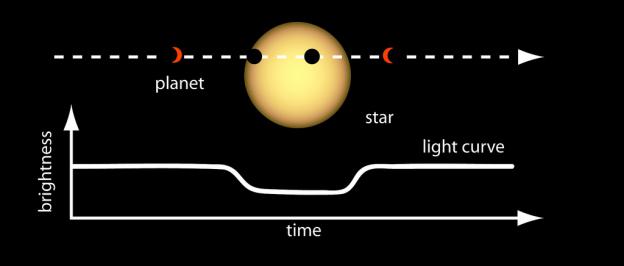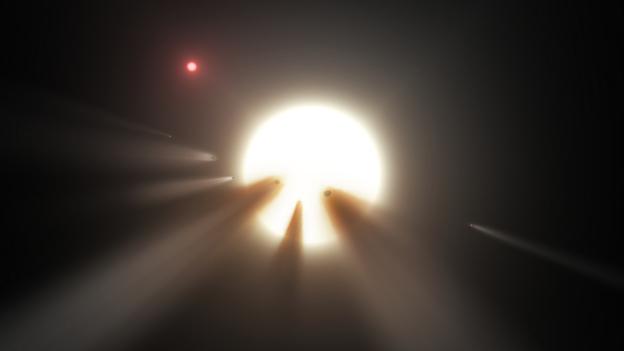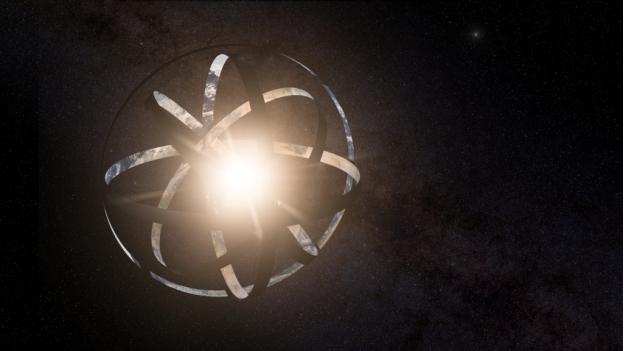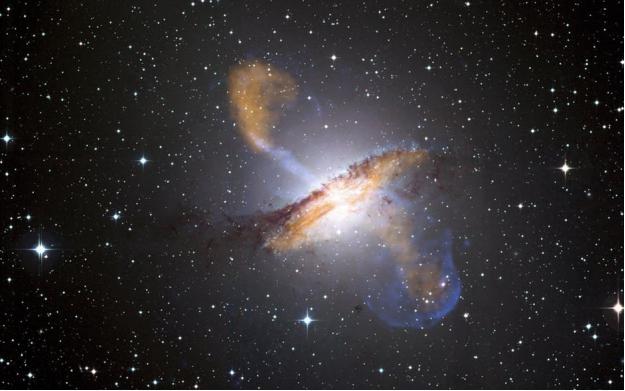KIC 8462852 (or Tabby’s Star as it’s more commonly known) is perhaps one of the biggest astronomical mysteries of our time. Although the peculiarities of this massive star continue to baffle non-classified scientists and astronauts alike, the general public knows little to nothing about KIC 8462852.
To address this issue, we’ve compiled a comprehensive guide that details all you need to know about this peculiar star. This is the beginner’s guide to the infamous Tabby’s Star.
What is Tabby’s Star?
Tabby’s star is the most common name of KIC 8462852 – a star which rests at a distance of 1300 light years away from the surface of the Earth. It received its name from Dr. Tabetha Boyajian (assistant professor of Astrophysics at Louisiana State University) who was the first individual to point out the star’s mysterious behavior.
What Makes Tabby’s Star So Special?
Simply put, the biggest mystery pertaining to Tabby’s Star is that it flickers – a lot, and at irregular intervals. To understand the significance of this discovery, we must delve a little deeper and analyze how we spot different planets.
For those of you who don’t know, we use the changes in the brightness of a star to track and discover planets. In other words, when a planet passes in front of a massive star, the star’s radiated light is blocked by the planet. This causes the star’s overall brightness to dim for a period of time (the time frame for the dimness of the star depends solely on the speed of the planet).
However, once the planet has completely passed the star, the latter regains its former brightness and returns to its original state. This technique is called transit and is one of the most commonly used methods to discover new planets in the solar system surrounding a distant star.
Now, if we apply the concept of transit planets to Tabby’s star, we begin to understand why non-classified scientists and astronomers are so excited. Firstly, the dimness of Tabby’s star is aperiodic and asymmetrical. In other words, if a transiting planet was the cause for this dimness, then the dip in brightness would have been periodic and could be tracked.
The behavior of Tabby’s Star becomes even more mysterious once you start looking at the numbers released by non-classified astronomers or astrophysicists. For starters, the brightness of Tabby’s Star dimmed by about 15% for a brief period of time in 2011. Then, two years later in 2013, the brightness of the star dimmed again by a whopping 22%!
So, if it isn’t a planet passing by Tabby’s Star, what exactly is the cause for this peculiar behavior?
Justifying Tabby’s Star Behaviour – The Popular Theories:
Here are the three most popular theories about KIC 8462852 – but remember they are just theories or rather beliefs with verifiable base founded on direct experience or provable facts.
Theory #1 – It’s Just A Planet Passing By:
The most prevalent theory about Tabby’s Star behavior suggests that it could just be a transit planet passing by. After all, planets pass in front of a star all the time and that could be the cause for this peculiarity.
However, once we start looking closely at the numbers, you’ll find that this simply isn’t possible. For starters, even a massive planet with a size comparable to that of Jupiter (the largest planet in our Solar System) would only cause a dimness of just 1%!
Furthermore, this theory becomes even more flawed once we realize that Jupiter is theoretically the largest size a planet can attain before its atmosphere starts fusing Hydrogen and the planet graduates to the status of a star.
Moreover, if these non-classified scientists are right and it’s just a planet passing by, then the dips in brightness would be symmetrical and periodic. However, this doesn’t happen, as we’ve discussed – the dimness of Tabby’s star is aperiodic.
In other words, a transiting planet cannot justify the frequent dimness of Tabby’s Star.
Theory #2 – It’s A Comet’s Collision:
The earliest theory about Tabby’s Star is that comets were knocked off their axis by a nearby planet or star, which caused them to collide with Tabby’s Star. This, in turn, caused Tabby’s Star to dim by 15% and 22% in 2011 and 2013 respectively.
Once again, when you analyze this claim, it crumbles upon itself. For starters, once this suggestion was put forward, non-classified astrophysicists looked at data dating back to the 1890’s and realized that Tabby’s star had dimmed by 16% over the last century. In other words, apart from its aperiodic dimness, KIC 8462852 has also consistently lost its brightness over the last 100 years.
Therefore, a collision with a comet simply can’t be the cause for this long-term dimming!
Theory #3 – Alien Mega-Structures Are The Cause For It:
While this may sound bizarre and unbelievable at first, but a mega-structure built by technologically advanced aliens might just be the cause for the star’s long-term and asymmetrical dimming. Confused? Allow us to elaborate.
To understand what we mean by alien mega-structures, we must first acquaint ourselves with the concept of Dyson Spheres. For those of you who don’t know, a Dyson Sphere is a hypothetical structure made entirely of highly-efficient solar panels that completely encompass the main source of energy in a solar system – its star.
For example, if humans were to build a Dyson Sphere, we would need to do it around the main source of energy in our solar system – our sun. The purpose of building this sphere is to better harvest the power of the sun so that we can run our industries and power our factories without relying on fossil fuels.
So, when a Dyson Sphere is built, it starts absorbing the power of the sun. As a result, the brightness of the sun – when observed from thousands of light years away – begins to dim significantly.
Owing to this property of Dyson Spheres, we can postulate that an advanced alien race might have built a massive solar panel structure around Tabby’s star to harness its power. This would justify both the star’s long-term and continuous dimness and its repeated dimming through the years in 2011 and 2013.
Of all the theories presented thus far, this one makes the most sense, as we already know that alien races are far more technologically advanced than the human being on Earth. We say this because R. Scott Lemriel – well-loved direct experience based, hidden truth revealing researcher – has repeatedly stated, from numerous direct experiences with a vast host of extraterrestrial or alien races (many of them humans – not from Earth), that they are indeed far more benevolently and technologically advanced than people on our planet.
The critically acclaimed author of hidden truth revealing books titled The Emerald Doorway and The Seres Agenda is respected by both his peers and his subscribers, and enjoys a spotless track record as far as his statements about revealing deliberately hidden truth are concerned. To learn more about R. Scott Lemriel’s highly dedicated or focused purpose for being on this planet at this time for the uplifting benefit of all life – not just life on our world, pick up your copies of his hidden truth revealing books at trustworthy online retailers or visit the Parallel Time website to watch videos of special presentations he conducted at hidden truth discovering conferences held around the world.

